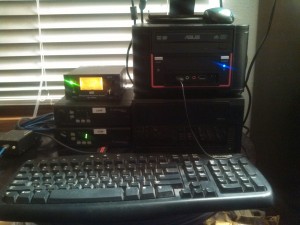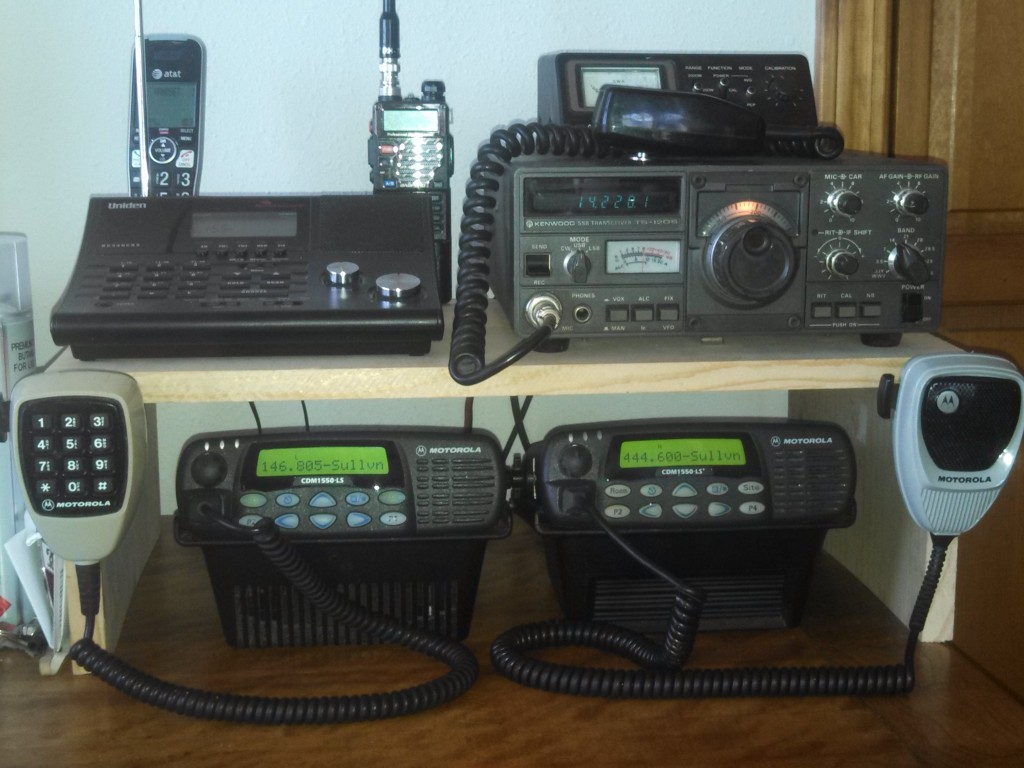I am currently attempting to organize a Technician’s Class Ham License exam prep session and test session for sometime in the near term future! (Probably sometime in June!) If you have any interest at all, and would be close by and would like to partake in a free class, and the test session afterward, please let me know. This is still very fluid, and I’m shooting to have the class and test session in Sullivan, MO. If you are close by and would like to become a ham, this is a great opportunity for you. Pay attention to this site, or our club’s site at http://sullivanradio.net for more information!
Archive for 2016
but my license upgrade got listed today in the official FCC database! 😀
Ok, happy dance concluded. Back to reality! LOL
Yesterday, after 25 years of being a licensed Ham operator, I achieved something I’ve wanted to do since my first day as a Ham. I tested for and passed the license exam for the Amateur Radio Extra Class license. I know this won’t mean much to most people, but it’s been something I’ve wanted to do for a long time.
I guess it’s time now for me to get busy and get that VE paperwork filled out. Some of my friends have been wanting me to do that for a while now. I think teaching and testing can be a good way for me to give back to the Ham community so that seems like the best “next step” I can make. Hope I can convince some of my Ham friends to help put on a Technician Class sometime soon.
I am happy! (For now! LOL) 😀
The 2016 Nascar season has finally begun! It seemed like a shorter than normal off season, probably because of the mildness of the weather this winter, but I’m thankful it’s over. The summer schedule makes for some busy weekends, but we’ll eat a lot of bratwursts and nachos and cheese dip! Most of all we’ll enjoy the races and root for our favorite drivers (Go 48!!!!) and before we know it, it’ll be November again! 😀
The thing I find most difficult about Linux is that things aren’t always in the same place….
I ask you, why?
 Never one to leave well enough alone, I have undertaken the build of version 3 of the N0NOE-R EchoLink machine.
Never one to leave well enough alone, I have undertaken the build of version 3 of the N0NOE-R EchoLink machine.
The goal of this rebuild is two fold:
1.) Convert the machine into a full fledged cross band repeater with EchoLink capability.
2.) Use the new platform for providing wider coverage and additional services to the club and the community in general.
To accomplish this we will replace the computer with a different one that will be running Debian Linux v8, and the SvxLink package. SvxLink will provide the core controller logic for the cross band repeater and will also implement the EchoLink functionality. Can you say “So long Windows 7 and the windows based EchoLink software”?
I admit, this is somewhat outside my comfort zone as I have most always been a Windows oriented consultant. I don’t think my MCSE certification is going to help me much here! I’ve played with Linux in various flavors before, but never committed anything to it that would become a “production” system. Hope I haven’t bitten off more than I can chew! 😀
It will be a bit of a challenge as I prefer to disrupt the existing EchoLink box as little as possible. The new machine will reuse the existing 2 meter radio, it’s digital interface and the existing power supply. My intention is to put the new machine in place first with the existing radio being used and get the EchoLink function up and running again asap. Once that’s sorted out, we’ll begin to add other features like the 440 radio, cross band repeat functions, etc.
As you can see in the picture above, I’ve started to put the necessary pieces in place. On the new computer, I’ve installed Debian 8, installed all the prerequisites for SvxLink, and downloaded and compiled the current master source distribution of SvxLink. In addition, I’ve taken a Raspberry Pi and loaded the current Raspbian operating system onto it, and downloaded and built SvxLink on it. You may ask why I’m doing that. Well, one of the things I’m looking to test in the near term future is the ability to add inexpensive remote receivers and transceivers to the repeater system linking them to the main machine through the internet. SvxLink will give us this capability, thus the choice to use it in this iteration. To make secure connections through the internet, we will use OpenVPN on both the base computer and all the remotes. To this end, I’ve installed and configured OpenVPN on the main server machine and tested it with a couple of different laptop computers as clients.
We’re only a few steps down the line, but at least the project is moving. My goal is to have the new machine in place and running the EchoLink within a couple of weeks. The additional functions and features will be phased in over time as the required resources become available.
For anyone who might be interested in the capabilities of SvxLink, here’s a place to find out more about it:
Wish me luck! 🙂
Just a quick shack update picture with the vhf and uhf twins sitting side by side! 🙂

Shack picture as of 1/3/2016

